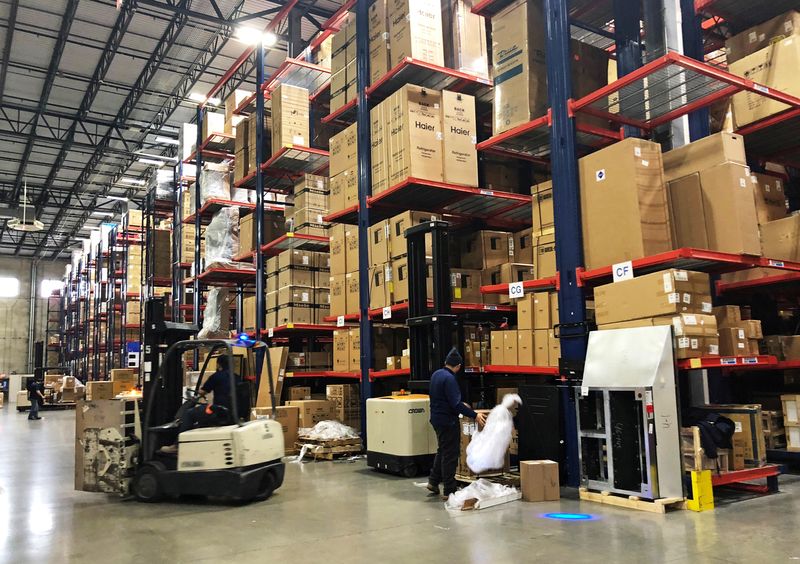WASHINGTON (Reuters) - U.S. wholesale inventories increased solidly as initially estimated in January, but the pace slowed significantly from the prior month, which could result in inventories making little or no contribution to economic growth this quarter.
The Commerce Department said on Tuesday that wholesale inventories rose by an unrevised 0.8% in January. Stocks at wholesalers increased 2.6% in December. Economists polled by Reuters had expected inventories would be unrevised. Wholesale inventories advanced 18.1% in January on a year-on-year basis.
Inventories are a key part of gross domestic product.
Wholesale motor vehicle inventories fell 2.2% after surging by 5.5% in December. Wholesale inventories, excluding autos, increased 1.1% in January. This component goes into the calculation of GDP.
Inventory investment surged at a robust seasonally adjusted annualized rate of $171.2 billion in the fourth quarter, contributing 4.90 percentage points to the quarter's 7.0% growth pace.
Most economists see further scope for inventories to rise, noting that inflation-adjusted inventories remain below their pre-pandemic level. Sales-to-inventory ratios are also low.
But inventories are unlikely to be much of a boost to GDP growth this quarter as they would need to increase by the same magnitude as in the fourth quarter.

Restocking, after three straight quarters during which inventories were drawn down, is supporting manufacturing.
Sales at wholesalers shot up 4.0% in January after rising 0.8% in December. At January's sales pace it would take wholesalers 1.20 months to clear shelves, down from 1.24 months in December.